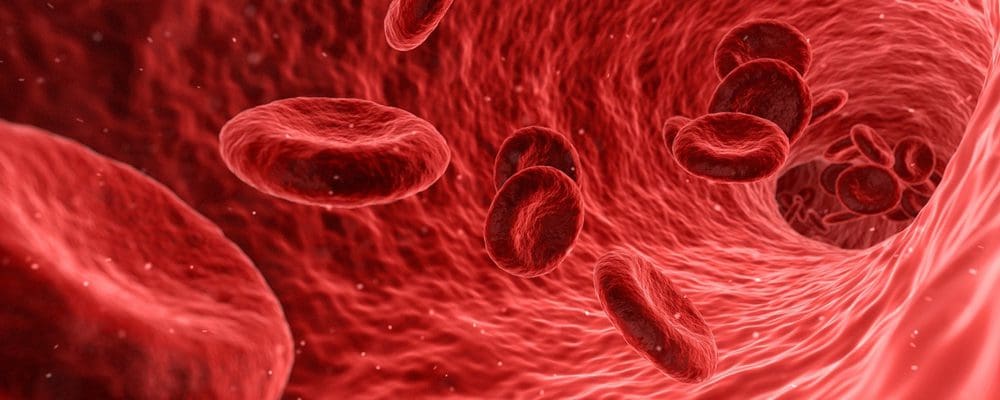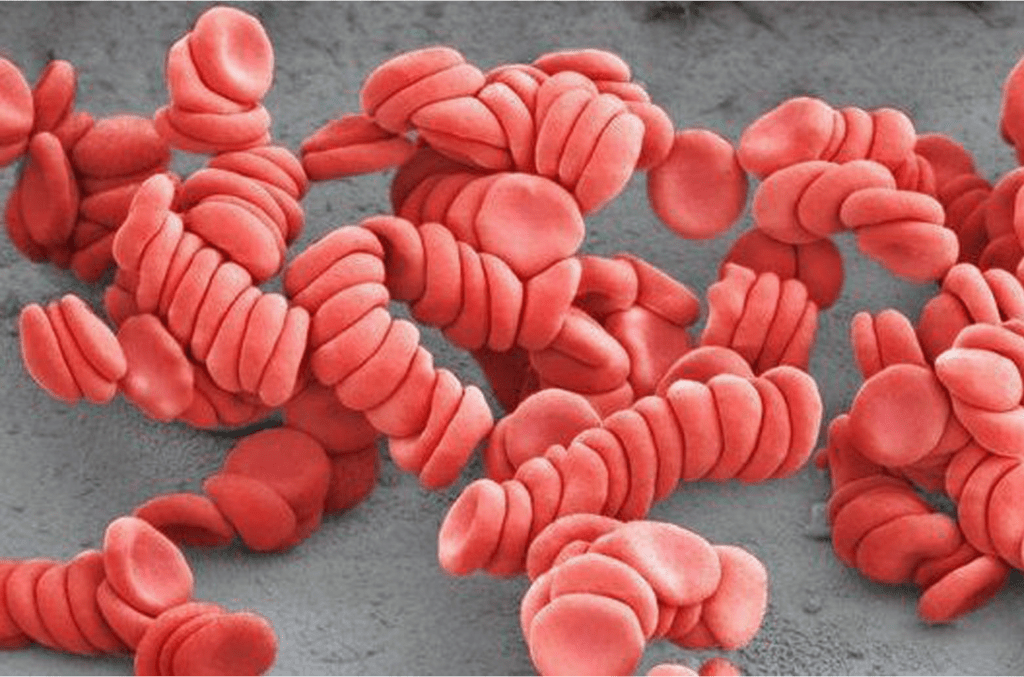Your blood performs a bunch of tasks to keep you healthy and alive. Delivering oxygen to the cells, helping to distribute nutrients, and removing waste materials from the body are just a few examples. Interfere with its performance, and health problems are bound to arise. That’s where EMF comes in.
Research studies have found that your day-to-day EMF exposure heavily interferes with your blood’s functioning, which in turn can create problems like high blood pressure, blood clotting, and cardiac arrest.
In this post, we’ll take an in-depth look at the effects of EMF exposure on your blood, as well as ways to reduce your risk of developing these problems. So, let’s begin.
Aggravated Viral Infections
Proper blood circulation is extremely crucial for optimal health. Your circulatory system carries your blood and oxygen and delivers them throughout the body, allowing your organs to function properly. If your circulation improves, you’ll start seeing physical changes like faster wound healing, a sharper brain, better cardiac health, and a natural flush to your complexion.
According to Dr. Marjan Moghaddam of the Henry Ford Health System, “Circulation can also affect the immune system, as certain blood cells, carried by the bloodstream, help to fight infection.”
Ensuring that your circulatory system is functioning properly is crucial, especially now when COVID-19 is prevalent.

Want to Slash Your EMF Health Risks?
Want to Slash Your EMF Health Risks?
Good! Learn the one small change you should make right now.
Research studies say that prolonged EMF exposure promotes the rouleaux effect in the blood, causing a quality reduction in your blood circulation.
Before trying to understand the mechanism of rouleaux formation, you have to first be familiar with the shape and functions of the red blood cells in your body. Red blood cells, or RBCs, are the principal means of delivering oxygen to your tissues. They’re round in shape with a flattish, indented center. Think of a doughnut without a hole; that’s what a red blood cell looks like.
RBCs are microscopic, and they flow unattached to each other in your veins and arteries.
Rouleaux formation causes your RBCs to stack on each other like coins, which causes them to change formation. This restricts the blood flow throughout your body, as your capillaries (very tiny blood vessels) can only accept free-flowing singular and independent RBCs.
A restricted blood flow can cause the following problems:
- Swollen veins and arteries (varicose or “spider” veins)
- Heaviness in legs and feet
- Skin discoloration
- Swollen legs and feet
- Split, weeping skin
- Ulcers
- Pelvic pain or discomfort
- Restless legs and feet
- Numbness and tingling
- Aches or leg pain
- Lack of hair growth on legs and feet
- Impaired toenail growth
And besides these, patients suffering from rouleaux formation have a higher chance of going into cardiac arrest.
Disturbance in Hematological Parameters
In 2018, a group of Libyan researchers performed a research study in which they found that prolonged EMF exposure disturbs the Hematological parameters in your body.
Human blood comprises several components, including RBC (Red Blood Cells), WBC (White Blood Cells), Hemoglobin, and many more. All these components need to be in a specific volume for your blood to function properly in your body. If those components are over or under the required amount, it can create several health problems.
Through years of research, we now have a concrete understanding of the required volume of these components in our bodies according to the age group. And the reference point we use to determine if your blood is healthy is called the “Hematological Parameters.” Hematological literally means ‘of or relating to blood.’
Here’s a list of different hematological parameters and their normal range, according to age group.
| Parameter | Male age (Years) | n | Range values | Female age (years) | n | Range values |
| WBC (/μL) | 18–49 | 163 | 2972–8802 | 18–49 | 40 | 3800–12500 |
| 50–59 | 11 | 3900–26500 | ||||
| RBC (× 10^6 /μL) | 18–49 | 163 | 4.15–6.24 | 18–49 | 40 | 3.88–5.75 |
| 50–59 | 11 | 4.24–6.14 | ||||
| Hb (g/dL) | 18–49 | 163 | 12.4–17.5 | 18–49 | 40 | 12.0–14.9 |
| 50–59 | 11 | 14.0–17.9 | ||||
| HCT (%) | 18–49 | 163 | 33.1–54.6 | 18–49 | 40 | 26.8–52.5 |
| 50–59 | 11 | 37.2–54.6 | ||||
| MCV(fL) | 18–49 | 163 | 72.1–96.4 | 18–49 | 40 | 39.2–118.0 |
| 50–59 | 11 | 72.7–101.1 | ||||
| MCH (pg) | 18–49 | 163 | 23.1–32.9 | 18–49 | 40 | 23.1–34.8 |
| 50–59 | 11 | 22.8–35.1 | ||||
| MCHC (g/dL) | 18–49 | 163 | 30.9–34.7 | 18–49 | 40 | 30.9–34.5 |
| 50–59 | 11 | 31.4–36.0 | ||||
| RDW (%) | 18–49 | 163 | 11.9–17.4 | 18–49 | 40 | 11.6–24.3 |
| 50–59 | 11 | 12.3–16.3 | ||||
| PLT (× 10^3) | 18–49 | 163 | 142–482 | 18–49 | 40 | 151–532 |
| 50–59 | 11 | 117–332 | ||||
| MPV (FL) | 18–49 | 163 | 5.6–9.3 | 18–49 | 40 | 6.0–10.5 |
| 50–59 | 11 | 6.1–9.8 | ||||
| Neutrophils (× 10^2 /μL) | 18–49 | 163 | 1000–4462 | 18–49 | 40 | 1200–7400 |
| 50–59 | 11 | 1800–2400 | ||||
| Lymphocytes (× 10^2 /μL) | 18–49 | 163 | 1200–3800 | 18–49 | 40 | 1400–4600 |
| 18–49 | 11 | 1800–2800 | ||||
| Monocytes (× 10^2/μL) | 18–49 | 163 | 100–672 | 18–49 | 40 | 100–500 |
| 50–59 | 11 | 0–400 | ||||
| Eosinophils (× 10^2/μL) | 18–49 | 163 | 0–1006 | 18–49 | 40 | 0–825 |
| 50–59 | 11 | 0–1508 | ||||
| Basophils (× 10^2 μL) | 18–49 | 163 | 0–110 | 18–49 | 40 | 0–108 |
| 50–59 | 11 | 0–100 | ||||
| CD4 Counts (× 10^2 cells/μL) | 18–49 | 163 | 468–1656 | 18–49 | 40 | 391–1748 |
| 50–59 | 11 | 480–999 | ||||
| CD8 Counts (× 10^2 cells/p) | 18–49 | 163 | 0–1263.6 | 18–49 | 40 | 364–1748 |
| 50–59 | 11 | 0–1272.0 |
The researchers concluded their study by saying, “Exposure of human and experimental animals to EMFs has shown to cause harmful effects on blood cells. The intensity of disturbance in hematological parameters varied depending on species, EMF sources, frequencies, intensities, and duration of exposure. The current EMFs exposure guidelines need to be updated or reconsidered as new scientific information on EMF, and the hematological parameters are produced.”
Increase in Systolic Blood Pressure
If you’ve had your blood pressure checked recently, you may have noticed that your test result includes two numbers, separated by a slash (/) symbol. These numbers signify your systolic and diastolic blood pressures.
When your heart beats, it creates pressure to push your blood towards the rest of your body via blood vessels. This force is called systolic blood pressure.
Here’s how you can understand your systolic blood pressure reading (the number before the slash symbol):
- If it’s below 120, your systolic blood pressure is normal.
- If it’s between 120-129, then it’s elevated.
- If it ranges between 130-139, you have high blood pressure, which is also called stage one hypertension. However, if it exceeds 140, then it’s stage two hypertension, which can be extremely harmful.
- But, if the pressure reads above 180, that’s an emergency. In that case, you’ll need to seek immediate medical attention because you can go into cardiac arrest at any moment.
On the other hand, diastolic blood pressure is the pressure in the arteries when your heart rests between beats. The number after the slash symbol is your diastolic blood pressure.
Here’s how to understand diastolic blood pressure readings:
- If less than 80, then it’s normal.
- Stage 1 hypertension begins from 80-89 and reaches stage two when it’s 90 or more.
- If the reading is above 120, that’s an emergency. Seek immediate medical attention.
A research study from Ain Shams University, Egypt, says that prolonged exposure to EMF from cell phones significantly increases the systolic blood pressure in mammals.
Their research included 110 albino rats of both sexes, weighing 180-200 grams, separated into two groups. They exposed one group to cell phone radiation"Radiation" in the context of Electromagnetic Fields (EMF) refers to the process by which energy is emitted and transmitted through space or a material medium in the form of electromagnetic... for four weeks and another group for eight. They concluded their research by saying, “Exposure to cell phone EMF caused a significant increase in the systolic blood pressure in all test groups. And a higher pressure was seen with the group that had prolonged exposure.”
Other EMF’s Health Effects
Besides interfering with your normal blood function, EMF is also known to cause problems in other parts of your body and disturbance in their functions. These health effects range from minor sleep disorders to chronic disorders like cancer.
You can read more about them on my “EMF Health Effects” page.
What Can You Do?
The science is clear—EMF is harmful to your health.
Unfortunately, there are few places you can go today without being showered by EMF. So, what can you do? Should you give up the convenience of technology and live someplace with low EMF pollution?
That is one approach, but not necessarily the best one. Humanity has come this far for a reason, and giving up technology is bound to add a ton of inconveniences to your life.
The most practical way to go about protecting yourself from EMF is to lower your exposure down to a level where it’s safer for you to use technology.
Here are some tips to help you reduce your risk of developing EMF-induced health problems without disconnecting yourself from the world.
Build a Healthy Relationship with Technology
Technology makes our lives incredibly convenient, but it also comes with a severe amount of risk if not used in moderation. If we look at the statistics, tech addiction among teenagers and young adults is at an all-time high. And psychological studies say that it’s one of the reasons there’s a significant increase in mental health problems like chronic depression and extreme social anxiety in the general population.
On top of that, continuous use of gadgets like cell phones and laptops exposes us to massive EMF radiation, increasing our chances of developing EMF-induced health problems.
If you feel that you fit this description, then it’s time to make some positive changes in your life.
A 2021 survey found that Americans spend an average of five to six hours every day on their cell phones, and this number does not include work-related use. Start by setting a time limit on your gadgets’ use. Doing this will lower your EMF exposure, reduce addictive behaviors, and save you a lot of time that you can invest in yourself.
I also recommend getting rid of screen-based gadgets at least two hours before bed. Doing this will reduce your blue light exposure and increase your sleep quality. If you want to learn more about the relationship between screen-emitted blue light and your health, visit my post “What is Blue Light?”
Make it a Habit to Unplug and Switch Off
Electronic devices and electrical appliances emit EMF even when you’re not using them. So, make it a habit to switch off and unplug your devices when not in use.
For smartphones, you don’t even have to switch them off. Just put them on Airplane mode, and they will stop emitting EMF.
Make Your Bedroom a Sleep Sanctuary
“Every adult should get at least 7-9 hours of quality sleep every single night,” says the National Sleep Foundation. A good night’s rest is crucial for humans because, when you’re asleep, your body performs several important tasks like wound healing, detoxification, flushing waste materials from your brain, and more.
Research says that the EMF pollution in your bedroom interferes with your sleep, preventing you from having quality REM sleep. This is why building biologist and EMF expert Cathy Cooke recommends turning your bedroom into a sleep sanctuary.
Building a sleep sanctuary includes making your bed more comfortable, making your room aesthetically pleasing, cutting out background radiation, and more. You can learn all about it in my post “Creating a Sleep Sanctuary.”
Consider EMF Shielding Products
I always tell people that reducing tech use, maximizing distance from EMF sources, and refraining from buying extra tech gadgets unless absolutely necessary, are the best ways to mitigate EMF exposure. But I also understand that not everyone can achieve this very easily. This is why we created laboratory-tested EMF shieldingEMF shielding refers to the practice of reducing the electromagnetic field (EMF) exposure in a particular area by blocking or altering the electromagnetic waves with barriers made of conductive or... products based on Michael Faraday’s EMF shielding principles as a second line of defense to your EMF shielding efforts.
Visit my “How it Works” page to learn more about what our products do and which ones best fit your needs.
Educate Yourself on The Subject
When you educate yourself on the subject of EMF, you stop falling prey to misinformation—which, frankly, is abundant. Besides that, if you know how EMF works and what its effects are, it’s easier for you to plan your EMF mitigating efforts in a way that gets you intended results. This is important because, when it comes to EMF, a tiny error can invert the result, and you may end up absorbing more EMF rather than less.
SYB’s primary goal is to bridge the gap between complex EMF science and the general population. So far, we’ve created hundreds of posts that cover virtually everything you need to know about living a safer, healthier life without giving up the convenience of technology. You can read those posts for free on this website. I recommend you begin with the “SYB’s Healthy Living Tips” page.
Final Thoughts
EMF is unsafe, and there’s no getting around this fact. So, you have to be careful while interacting with things that emit EMF.
But I also want to clarify that technology is not a villain, and you shouldn’t treat it as one just because it can cause health problems. It has incredible benefits, and we, as a society, have been able to move forward because of it. The key here is to learn how you can make technology work for your betterment.
SYB recently launched a new show called the “The Healthier Tech Podcast,” in which experts from the EMF and health industry share what they’ve learned about building a better relationship with technology. It’s available on all major podcast platforms, and you can tune in for free. So, get started today.











